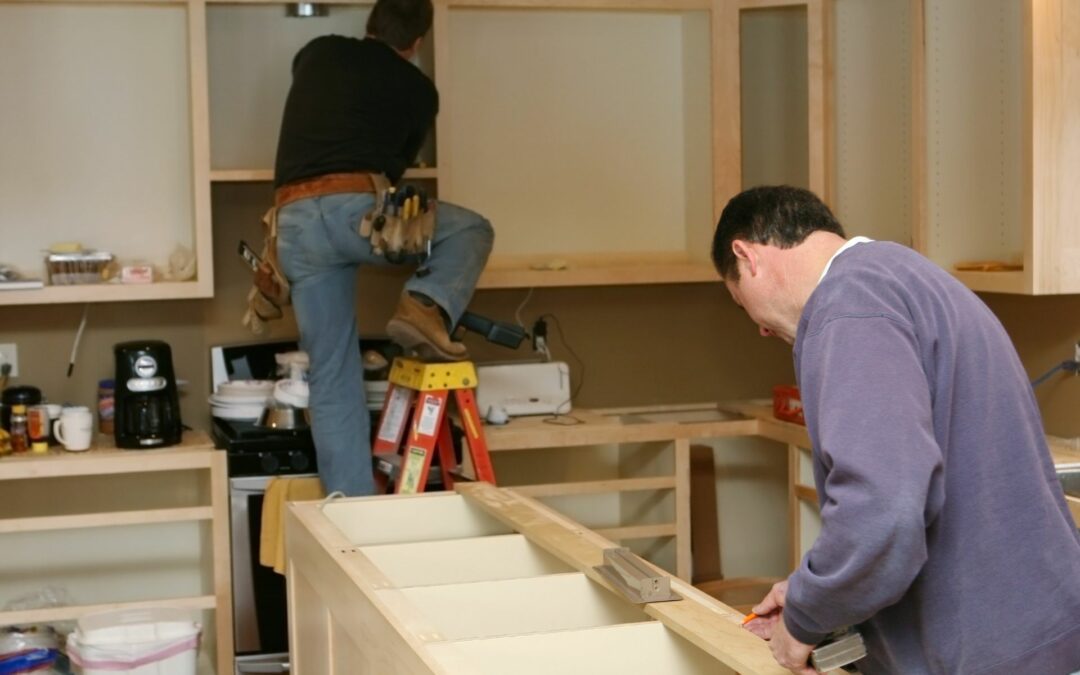If you’re someone with a zest for DIY projects, you might find yourself considering a DIY home remodeling project. While this undertaking can be rewarding, it’s equally important to be prepared and know what not to do. For a successful DIY home remodel, learn about the mistakes you need to avoid making during the process.
1. Overestimating Your Skills and Expertise
There’s a kind of self-assured bravado one possesses when embarking on a do-it-yourself project. It could be anything – painting your house, installing new kitchen cabinets, or even setting up a home entertainment system. You feel the fire of confidence burning bright within you and get tempted to think, “I can surely do this all by myself.” Trusting in your abilities is imperative, as it drives the engine of ambition. Yet, it becomes counterproductive when one heavily overestimates their skills and expertise.
One of the most common pitfalls novice DIY enthusiasts fall into is having an overinflated perception of their abilities, which can lead to expensive and, at times, irreversible disastrous results. This miscalculation often emerges from a lack of understanding of the complexities involved in a project.
Simple tasks like replacing a light fixture or painting a room may indeed be straightforward, but when it comes to more complex undertakings that require specialized knowledge and tools, such as plumbing or electrical work, the margin for error significantly widens. These types of tasks require a firm grip on the intricacies beneath the surface, which may not always be evident to an untrained eye.
2. Not Setting a Realistic Budget
Executing home building or renovation projects often starts excitedly with grand visions of the ideal dream home. However, amidst this glee, many forget to cogitate on and establish a practical budget, thereby setting the stage for a potentially draining financial miracle. In reality, the expense of construction or renovation could, without proper planning and budgeting, swiftly spiral beyond expected costs. This critical underestimation often stems from failing to consider necessary details such as material and labor costs, contingency reserves, and possible rate inflations or extra charges. Investing enough time and effort into structuring a comprehensive budget is a decisive step in the right direction.
It’s crucial to bake into the budget, not just actual construction or renovation costs but other collateral costs, including the cost of permits, professional fees, temporary accommodations if needed, and fluctuating market prices. Often, these overlooked costs that lurk in the background have a significant knack for stacking up and causing an abrupt budget overrun. Consequently, this could lead to abandoned projects, substandard work, emotional stress, and significant financial setbacks.
3. Skimping on Quality Materials
One of the most common oversights during home renovations is reducing expenditure by opting for low-quality materials. It’s an understandable temptation; why shell out more when you can save a few bucks on a cheaper alternative, right? Unfortunately, this penny-pinching strategy often results in long-term regrets.
Going for low-end materials might seem like a good idea in the beginning, but in reality, it often leads to more harm than good. Cheap materials may lack the durability and aesthetics necessary for a long-lasting, satisfactory outcome for your renovation project. On the other hand, quality materials offer both visual appeal and longevity. Imagine installing a kitchen countertop that’s not only stunning but also resistant to scratches and heat damage.
High-grade materials like these very often save you money over time. How’s that, you ask? Well, they require fewer replacements and repairs, relieving you from unexpected renovation costs down the line. Plus, they’ll likely increase your property’s value! So next time, before trading quality for a lesser price tag, remember that investing in superior materials is an investment in your home’s lasting value.
4. Ignoring Building Regulations and Codes
Building regulations and codes aren’t just lengthy documents filled with bureaucratic jargon. Rather, they are specifically designed sets of rules to ensure the safety, functionality, and effectiveness of any construction, renovation, or repair work done on a structure. Blowing off these rules might seem like a tempting shortcut in the heat of the moment, but it’s actually a shortcut to potential disaster down the line. Violating these standards could lead to several long-term problems, such as unsafe structures, costly repairs, and even legal troubles.
Of course, it’s easy to say, “Just follow the rules,” but when you’re knee-deep in a project, and those rules seem more like hindrances than help, that easy answer can seem far from simple. Nevertheless, understanding and adhering to building regulations and codes is crucial, even when they are complex or confusing.
This understanding helps in making informed decisions about the construction process and impacts the longevity and safety of the structure. It’s always advisable, therefore, to consult with a knowledgeable source, whether that’s a professional contractor or an experienced DIY guru, to ensure your project stays up to code. Working within the established norms not only saves you from future headaches but also lays the foundation for a safer and more robust structure.
5. Failing to Plan for Waste Disposal
When embarking on a new renovation project, the majority of homeowner’s minds are occupied with design inspiration, color palettes, and building materials. But what about the heap of waste that renovation churns out? It’s the part no one likes to consider, but trash disposal is a crucial element often overlooked in planning stages. Without proper planning for waste management, a mini mountain of debris could soon be messing up your picturesque space, slowing down work progress, and even attracting pests.
Renovation waste isn’t the everyday garbage that can be whisked away once a week by your municipality. It consists of a mix of materials – chunks of brick or concrete, broken tiles, remnants of old plaster, and surplus building materials – many of which can’t be hauled off in typical trash bags. Given the quantity of materials that pile up, you might find yourself making endless trips to the dumpsite, dragging along load after load.
Planning a waste disposal strategy in advance can save you this trouble and keep your renovation on track. Always bear in mind that a neat, clutter-free work site aids in smooth operations, reducing the possibility of delays, accidents, and overrun budgets.
6. Neglecting Safety Measures
Construction and renovation projects are exciting, right? You’re taking something old and faded, or maybe even nothing at all, and transforming it into a striking functional structure. But in all the thrill, we often forget to take the necessary precautions to ensure our safety.
It’s not uncommon for us to think, “It won’t happen to me,” or “I’ve done this before, no issues.” However, donning a pair of rose-colored glasses isn’t going to save you from a ladder that topples due to an unstable base or a power tool mishap due to lack of proper training. It’s vital that safety takes the helm in every construction process.
This means wearing protective gear – helmets, gloves, safety glasses, proper footwear, and the like. It also involves understanding the correct usage of power tools and ensuring every piece of equipment is used as intended. There’s a wide array of training programs out there that offer guidance and instructions on safe construction processes, and tapping into their insights proves beneficial every single time. Remember, every step taken towards safety measures is a painful and costly accident averted!
7. Misjudging the Time Frame Required
Time management often takes a backseat when it comes to home remodels or renovations. The classic Hollywood-fueled idea of a weekend fixer-upper, although tempting, is a far cry from reality for most projects. This overly optimistic outlook often leads homeowners to severely underestimate the amount of time required to complete a task. This misjudgment doesn’t only disrupt your day-to-day life, but can also lead to rushed and subsequently shoddy workmanship, absolutely spoiling the pleasure of the resulting makeover. Ensuring a faultless finish within a realistic timeline needs a tactical plan.
The key lies in estimating a generous timespan, keeping in mind possible unforeseen challenges and setbacks. Prioritizing tasks based on complexity and urgency, managing workers efficiently, considering shipping and delivery wait times for the materials, and definitely accounting for a healthy dose of ‘life happens ‘-type disruptions: these are the factors that go into crafting a foolproof timeline. After all, perfection can’t be rushed, especially when it comes to creating your dream living space! So take your time, plan properly, and replace the ticking clock with the mantra of ‘better late than never.’
Want A Professional Home Remodel? Call Our Team Now!
After learning all about what to do not for a DIY home remodeling project, you either feel prepared or are now considering hiring a professional instead. If you live in California’s Bay Area, the best people you can trust to complete a professional home remodel are our team at BetterBuilt Builders. Contact us today and get started.


